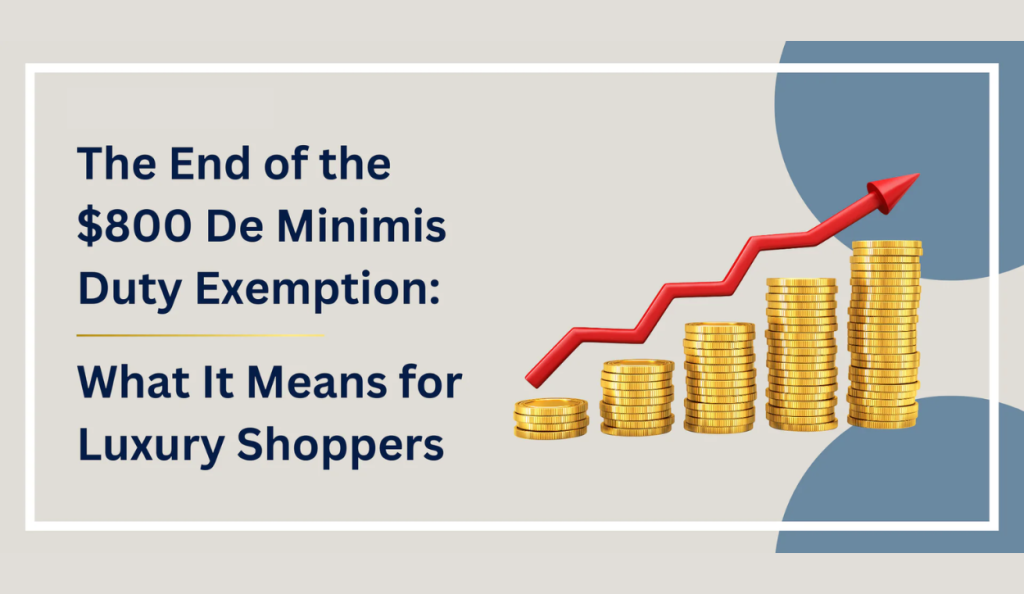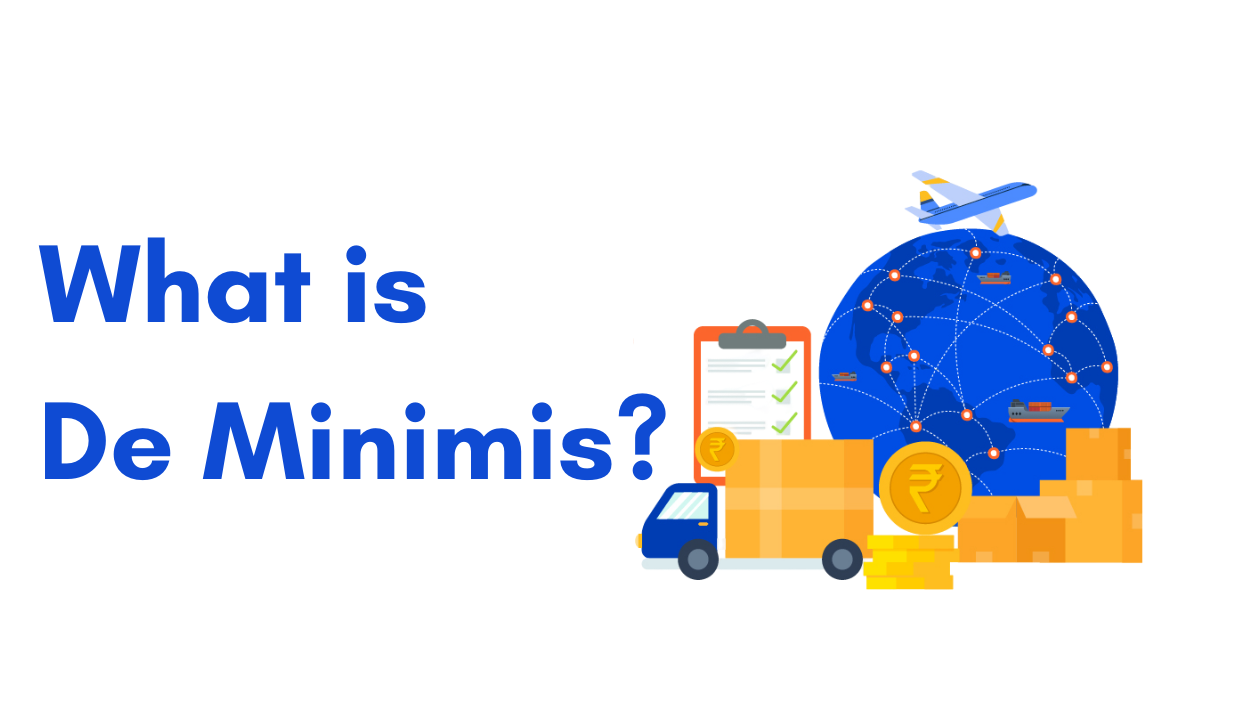Let’s talk about the end of De Minimis. On August 29, 2025, a quiet line item in U.S. trade policy became a loud gong for e-commerce: the federal government suspended the de minimis exemption for commercial shipments globally. If you sell online and ship to U.S. customers—or import inventory to sell domestically—the way you price, source, ship, and fulfill orders just changed for good.
This guide breaks down what changed, who’s affected, how costs move through the system, and exactly what to do next—both defensively (to control risk and margin compression) and offensively (to win market share while others scramble). Ideal Fulfillment works with fast-moving brands every day; below is a practical playbook you can put to work now.
Table of Contents
What Changed on August 29 & Why it Matters: The End of De Minimis
The old world: For years, the U.S. de minimis rule (known as Section 321) allowed low-value shipments valued at $800 or less to enter duty-free with streamlined customs clearance. This facilitated direct-from-factory parcel flows, cross-border DTC models, and ultra-cheap marketplace orders shipped from overseas warehouses.
The new world: As of 12:01 a.m. On August 29, 2025, the U.S. suspended duty-free de minimis treatment for commercial shipments from all countries. That means the vast majority of low-value imports are now treated like regular imports: formal or informal entries, applicable duties, taxes, and fees, and standard compliance/data requirements.
The change follows earlier 2025 actions that removed de minimis eligibility for goods from China and Hong Kong and signaled a broader clampdown. Now that suspension is global, closing a loophole many cross-border sellers relied on to keep landed costs—and consumer prices—low.

Who is Affected?
In short: nearly everyone in e-commerce who touches cross-border goods in any way.
- DTC brands importing finished goods or components for domestic sale
- Marketplaces and marketplace sellers that previously shipped direct to U.S. consumers from offshore DCs
- 3PLs, freight forwarders, consolidators, and postal consolidators that built flows around Section 321
- Retailers and resellers replenishing U.S. inventory from foreign suppliers
- Subscription boxes and micro-brands leveraging drop-ship from overseas partners
Even if you already import via formal entry, expect ripple effects—from freight mix shifts and carrier surcharges to capacity crunches at ports, brokers, and exam facilities as volumes move from parcel to freight and from direct-to-door to port-to-DC.
How Costs Flow Now: The New Landed-Cost Reality
With de minimis suspended, most low-value shipments now attract:
- Duty (ad valorem or specific, by HTS code and country of origin)
- Taxes/fees (MPF, HMF where applicable, state taxes on domestic sale, etc.)
- Brokerage/entry fees (especially for higher-volume entry filings)
- Compliance and data costs (accurate classification, valuation, origin, test certificates where required)
Your old landed-cost formula—especially if you were shipping direct to consumers from abroad—must be rebuilt. Expect unit economics to shift meaningfully on low-price/high-velocity SKUs.
Demand Impacts: What your Customer Will Feel
- Higher prices on goods that used to bypass duties through de minimis workflows. Multiple industry advisories and government notices forecast price pressure as duties and fees flow through.
- Potentially faster delivery for brands that pivot to U.S.-based fulfillment—especially when paired with regional placement for 2-day coverage.
- Better reliability: U.S. inventory mitigates cross-border disruptions (exams, holiday backlogs, flight caps) that used to stall direct-from-overseas parcels.
The Compliance Foundation: What “Good” Looks Like
1) Clean classification (HTS).
Get every SKU accurately classified, with documentation to back it up. A single miscode can cascade into penalties and shipment holds.
2) Solid valuation.
Ensure your transaction values and transfer prices are audit-ready. No guesswork, no “we’ll fix it later.”
3) Origin traceability.
Document bill of materials and production steps. Rules of origin affect duty rates and eligibility for any trade programs.
4) Testing and certifications.
Children’s products, electronics, cosmetics, and anything safety-sensitive need complete compliance packets. Build a product-compliance library.
5) Recordkeeping.
Assume more enforcement ahead; legal updates already point to heightened scrutiny and False Claims Act risk for tariff evasion. Keep immaculate records for five years. Debevoise
Strategic Pivots That Protect Margin & Can Grow Share
A) Import in bulk; fulfill domestically
Shift from direct-to-consumer cross-border parcels to bulk imports into U.S. fulfillment centers, then ship domestically. You’ll pay duties once per inbound shipment rather than implicitly per order, and you’ll gain speed and delivery consistency on outbound.
Where Ideal Fulfillment helps:
- Fast inbound receiving for ocean/LCL or air freight
- Nationwide 2- to 3-day parcel reach from strategic locations
- Real-time inventory, order routing, and SLA dashboards
- Value-added services (kitting, light assembly, inserts, custom packaging)
B) Rethink your SKU economics
Re-model landed cost by SKU and bundle intelligently.
- Bundles move the customer up the price ladder, amortizing duties and pick-pack over more items.
- Promote margin-positive variants (sizes, multi-packs) and drop or re-engineer SKUs that can’t carry duties.
C) Diversify sourcing (and tariff engineer—legally)
- Explore alternative origins or finish/assembly in countries with better rates.
- Where appropriate, consider tariff engineering (changing materials or components) within legal bounds to arrive at a more favorable HTS.
D) Move upstream on inventory placement
- Use demand forecasting to position A-SKUs closer to customers.
- Adopt reorder point + safety stock policies that reflect new inbound lead times and exam risk.
E) Optimize your shipping matrix
- For inbound: compare ocean LCL vs. air in light of seasonality and cash cycle.
- For outbound: maintain two to three parcel carriers to flex during surcharges or capacity swings.
F) Tighten returns and refurbishment
Turn returns into resale faster with domestic triage and recommerce channels for open-box or lightly used items.
Pricing and Communication: How to Talk to Customers
Price transparently. If duties and fees increase your cost basis, don’t hide it—repackage value. Offer free returns, loyalty perks, or shipping upgrades to preserve conversion.
Set expectations at checkout. Use calculators and clear messaging: “Ships from our U.S. warehouse for fast, duty-paid delivery.” You’ll differentiate from competitors still navigating cross-border delays and surprise fees.
Reframe quality and reliability. Domestic fulfillment means predictable delivery, better packaging, and easier exchanges—all tangible benefits that justify price.
How Ideal Fulfillment Can Help—Right Now
1) Rapid landed-cost modeling
Send us your SKU catalog (HTS, origin, unit cost, dims/weight). We’ll help you model duties and total landed cost under the new rules so you can price with confidence.
2) Inbound playbook (ocean or air)
We coordinate with your forwarder and broker for clean entries, then receive and slot inventory for same-day/next-day putaway.
3) Fast, reliable domestic shipping
From our strategically located facilities, we hit 2–3-day coverage for most of the U.S., with negotiated parcel rates and proactive exception handling.
4) Value-added services that lift AOV
We do kitting, inserts, subscriptions, and light customization so you can roll out bundles and keep margins healthy even as duties rise.
5) Compliance comfort
We work hand-in-glove with your broker to ensure labels, docs, and data are consistent and audit-ready—reducing delays and surprise costs.
Ready to Future-Proof Your Fulfillment With Ideal Fulfillment?
If your business relied on de minimis, this isn’t the end—it’s a reset. Brands that import smart, fulfill domestically, and communicate value will come out ahead. Ideal Fulfillmentcan stand up your U.S. inventory program quickly, help you model costs with precision, and deliver the fast, reliable experience your customers will pay for.

